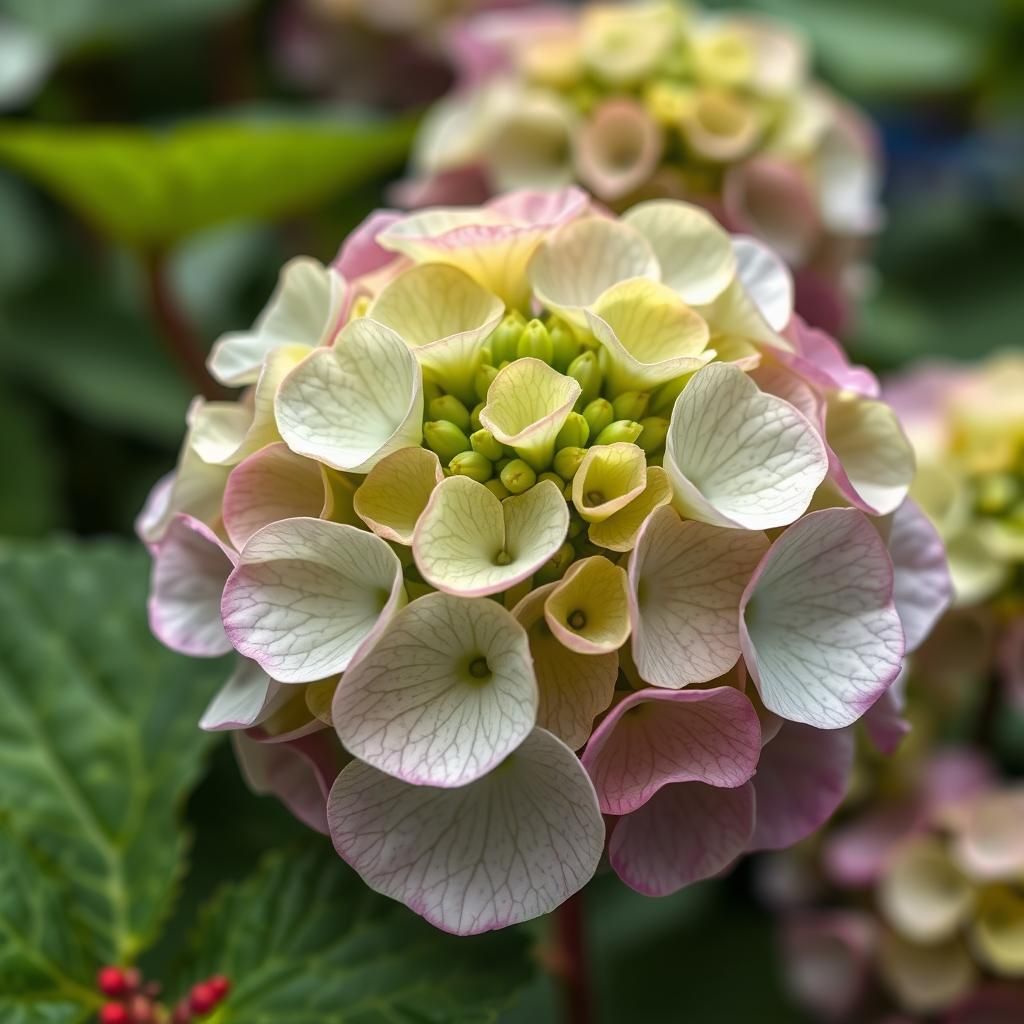The Ultimate Guide on When to Take Hydrangea Cuttings for Successful Propagation

Hydrangeas are beloved for their stunning blooms and versatility in gardens. Successfully propagating these beautiful plants can seem daunting, but taking cuttings at the right time makes all the difference. This ultimate guide will walk you through the optimal seasons and techniques for taking hydrangea cuttings, ensuring a high success rate in propagation. Whether you're an experienced gardener or just starting out, understanding the nuances of hydrangea cuttings will empower you to expand your plant collection and enjoy these spectacular flowers in your garden. Let's dive into the essential tips and timing that will set you on the path to hydrangea success.
When to Take Hydrangea Cuttings
Taking hydrangea cuttings is best done during the summer months, typically between late June and early August, when the plants are actively growing. At this time, the stems are semi-woody, which provides a better chance of successful rooting. The ideal cutting should be around 4 to 6 inches long and taken from healthy, non-flowering stems. Be sure to cut just below a leaf node, as this is where root development is likely to occur. It is essential to provide a humid environment and indirect light to ensure the cuttings establish roots in the weeks following the initial cut.
Choosing the Right Time
The best time to take hydrangea cuttings is during the early morning or late afternoon when temperatures are cooler. This timing helps to reduce stress on the plant, increasing the chances of successful rooting. Taking cuttings in this period allows the plant to maintain higher levels of moisture, which is vital for the cuttings’ survival before they are planted in a suitable medium.
Types of Hydrangeas for Cutting
While many species of hydrangeas can be propagated through cuttings, the most common types suited for this method are Hydrangea macrophylla and Hydrangea paniculata. These species exhibit strong root development when cuttings are taken at the right time. Understanding the type of hydrangea you have can significantly influence the success rate of your propagation efforts.
Preparing the Cuttings
After selecting healthy stems, it is crucial to prepare the cuttings appropriately. Remove lower leaves to minimize moisture loss while leaving a few leaves near the top to facilitate photosynthesis. Additionally, you may choose to dip the cut end of the stem in rooting hormone to encourage faster root growth. This preparation step can significantly enhance the chances of successful propagation.
See also:
Creating the Right Environment for Roots
Once planted, hydrangea cuttings require the right environment to flourish. It is crucial to maintain high humidity around the cuttings, which can be achieved by placing a plastic bag over the cuttings or misting them regularly. The cuttings should be kept in indirect sunlight to prevent scorching. A temperature range between 65-75°F (18-24°C) is ideal for optimal growth and rooting.
Aftercare for Successful Growth
After the cuttings have been established, regular care is essential for their continued growth. Ensure the cuttings remain in a moist growing medium but avoid overwatering to prevent rot. Transplant the new plants into larger pots once the roots have developed sufficiently, usually within 4 to 6 weeks. Continue to provide the appropriate amount of light and moisture as the plants transition to their new environment.
| Aspect | Recommendation |
|---|---|
| Optimal Timing | Late June to Early August |
| Cutting Length | 4 to 6 inches |
| Humidity Level | High |
| Ideal Temperature | 65-75°F (18-24°C) |
| Rooting Time | 4 to 6 weeks |
Understanding the Best Time of Year for Hydrangea Cuttings
When it comes to successful propagation of hydrangeas, the timing of your cuttings is crucial. Ideally, the best time to take hydrangea cuttings is during the late spring to early summer months, specifically when the plant is actively growing. This is when the wood is still soft and flexible, making it more receptive to rooting hormones and easier to establish roots in a new environment. When you cut during this period, the high levels of active growth hormones in the plant enhance the likelihood of successful propagation, leading to robust and healthy new plants.
Choosing the Right Type of Hydrangea for Cuttings
Selecting the appropriate variety of hydrangea is essential for successful propagation. Not all species root equally well from cuttings; for instance, Hydrangea macrophylla and Hydrangea paniculata are noted for their easier propagation through cuttings. Ensure you're familiar with the characteristics of the specific hydrangea you want to propagate. Some may respond better to softwood cuttings taken in spring, while others might require semi-hardwood cuttings in late summer. Understanding the specific needs of your chosen species will greatly improve your success rate.
Preparing Your Cuttings for Propagation
Once you've identified the right hydrangea variety, the next step is to properly prepare your cuttings. Use clean and sharp shears to cut a 4-6 inch segment from the tip of the stem, making sure to include at least two nodes. Remove any leaves from the lower part of the cutting to prevent rot when submerged in the planting medium. Consider dipping the cut end in a rooting hormone to enhance root development, which can significantly increase the chances of your cuttings taking root in their new environment.
See also:
Ideal Growing Conditions for Hydrangea Cuttings
Creating the right environment for your hydrangea cuttings is vital for optimal rooting. Aim to place them in a warm, humid area with indirect sunlight; direct sunlight can cause stress and wilt the cuttings. Using a propagation tray with a clear cover or a plastic bag can help maintain humidity levels while still allowing for some airflow. Soil choice is also important; opt for a well-draining potting mix or a combination of peat and perlite to ensure that your cuttings do not become waterlogged, which can lead to mold or rot.
Monitoring and Caring for Your Hydrangea Cuttings
After planting, it’s essential to monitor your hydrangea cuttings closely. Check the moisture level of the soil regularly, keeping it consistently damp but not soggy. Avoid letting the cuttings dry out, as this can kill the developing roots. In addition, be patient and refrain from disturbing the cuttings frequently, as this can hinder their rooting process. Depending on the variety and conditions, your cuttings may take anywhere from 4 to 8 weeks to root, at which point you can gradually acclimate them to their outside environment before transplanting.
Questions from Our Readers
When is the best time to take hydrangea cuttings?
Taking hydrangea cuttings is best done in the late spring or early summer, when the plant is actively growing. During this time, the stems are still flexible and able to root more easily. It’s crucial to ensure that the plant is healthy and free of pests or diseases before you proceed with taking cuttings.
What type of hydrangea is best for cuttings?
The most suitable types for cuttings are Hydrangea macrophylla and Hydrangea paniculata, as they tend to root well. These varieties produce stems that are soft and pliable, making it easier to propagate them. Always choose healthy, robust stems for the best chances of successful rooting.
How should I prepare the cuttings?
To prepare your hydrangea cuttings, you should select a 6 to 8-inch stem with several leaves and cut it just below a node. Remove the lower leaves to prevent them from rotting in the soil and leave a couple of leaves at the top to help the plant photosynthesize while it develops roots. Using a rooting hormone can also enhance rooting success.
See also:
How long does it take for hydrangea cuttings to root?
Hydrangea cuttings typically take about 4 to 6 weeks to root, depending on conditions such as temperature and humidity. During this time, it’s important to keep the cuttings in a warm and humid environment, which can be achieved by covering them with a plastic bag or placing them in a propagator. Proper care during this period is crucial for successful propagation.

If you want to read more articles like The Ultimate Guide on When to Take Hydrangea Cuttings for Successful Propagation, we recommend you check out our Shrubs category.
Leave a Reply
Related Articles